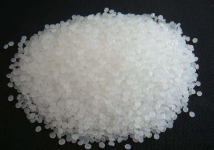read: 979 time:2025-07-14 23:06:57 from:化易天下
When it comes to using chemicals like acetone in everyday applications, a common question arises: will acetone damage cotton fabric? This question is particularly relevant for those working in industries involving textiles, as well as for individuals using acetone for cleaning or stain removal. In this article, we'll explore the chemical properties of acetone, its interaction with cotton fabric, and best practices for its use.
Acetone, also known as propanone, is a powerful and versatile solvent widely used in various industries. Its ability to dissolve a wide range of substances, including oils, greases, and synthetic resins, makes it a popular choice in laboratories and manufacturing processes. However, this same potency can raise concerns about its potential effects on different materials, including cotton fabric.
Cotton is a natural fiber made from the cellulose of cotton plants. Its fibers are known for their durability, breathability, and ability to absorb moisture, which makes cotton one of the most popular fabrics worldwide. However, because cotton is an organic material, it can be sensitive to certain chemicals, which leads us to the question: will acetone damage cotton fabric when applied directly?
To determine whether acetone will damage cotton fabric, it is important to consider the nature of the interaction between acetone and cellulose. Acetone is a non-polar solvent, while cellulose in cotton is a polar molecule. Generally, non-polar solvents like acetone do not readily react with polar substances, which means acetone does not chemically break down cotton fibers.
However, acetone can still affect cotton fabric under certain conditions:
Dissolution of Dyes: While acetone may not damage the cotton fibers themselves, it can dissolve dyes and finishes used in the fabric. This can result in discoloration or fading, particularly in brightly colored or printed cotton fabrics.
Stain Removal: Acetone is often used as a stain remover for substances like nail polish, glue, and certain types of ink. While effective, care should be taken when applying acetone to cotton, as excessive use can cause the dye to bleed or fade.
Fabric Weakening: Prolonged exposure to acetone can potentially weaken the fabric over time. This is especially true if the cotton has been pre-treated with chemical finishes, which may react with acetone and compromise the fabric's integrity.
If you need to use acetone on cotton fabric, it is crucial to follow these best practices to minimize any potential damage:
Spot Testing: Always perform a spot test on an inconspicuous area of the fabric before applying acetone to a larger area. This will help you determine if the fabric’s dye or finish reacts negatively to acetone.
Controlled Application: Use a small amount of acetone applied with a cotton swab or cloth, and avoid soaking the fabric. This reduces the risk of dye dissolution and fabric weakening.
Immediate Washing: After using acetone on cotton, it’s advisable to wash the fabric immediately with mild detergent and cold water. This will help remove any residual acetone and prevent prolonged exposure.
Avoiding Prolonged Contact: Do not leave acetone on cotton fabric for extended periods. Prolonged contact increases the likelihood of damage, particularly in delicate or heavily treated fabrics.
In summary, will acetone damage cotton fabric? The answer largely depends on the specific use and conditions. While acetone does not directly damage the cellulose fibers in cotton, it can cause dye fading, weaken the fabric if overused, and interact with chemical finishes. Therefore, careful application and immediate washing are recommended when using acetone on cotton fabrics to avoid any undesirable effects.
By understanding these nuances, you can safely use acetone in situations where it’s necessary, while preserving the quality and appearance of your cotton garments or materials.

Jincheng Petrochemical's 300000 ton polypropylene plant successfully trial production, 2024 polypropylene market analysis

The ABS market remains sluggish, what is the future direction?

Market differentiation of bisphenol A intensifies: prices rise in East China, while prices generally decline in other regions

The production method and process flow of silicone acrylic lotion, and what are the common raw materials